Chinese Yuan (CNY) Outlook
Published on: 22nd September 2022
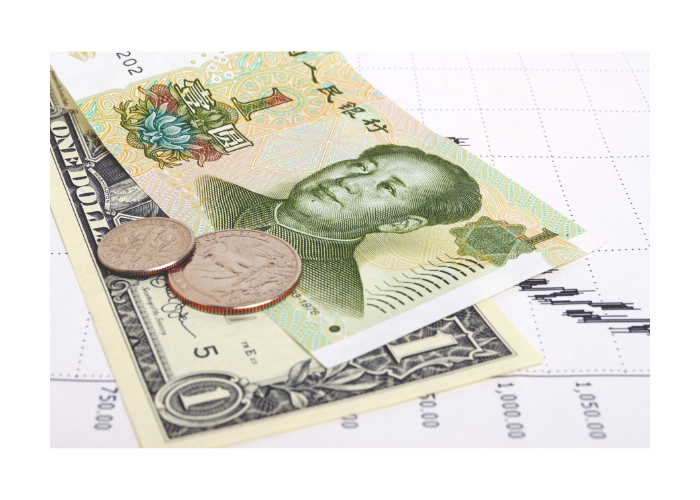
Chinese Yuan (CNY) Performance:
- The offshore yuan depreciated past 7.00 against the dollar, languishing at its lowest levels in two years, as Fed Chair Jerome Powell delivered a stern commitment to bring down inflation by keeping US interest rates higher for longer.
- On the other hand, PBOC is pressured to keep monetary policy accommodative to support China’s embattled economy.
- Beijing’s latest pro-growth measures were deemed insufficient to lift the country’s economy from resurgent Covid-19 outbreaks, property sector woes and energy shortages, as well as weakening external demand.
- Meanwhile, China’s industrial profits fell sharply in July as fresh Covid-19 curbs weighed on demand and power shortages caused by heatwaves disrupted production.
Inflation Rate and 10Y Bond Yield
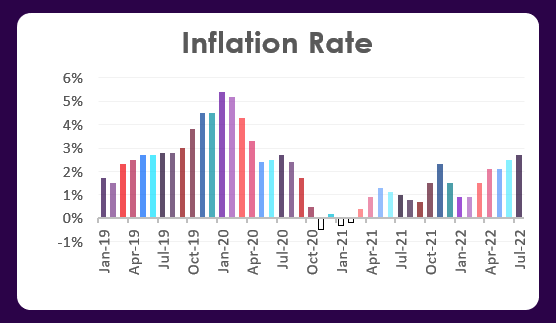
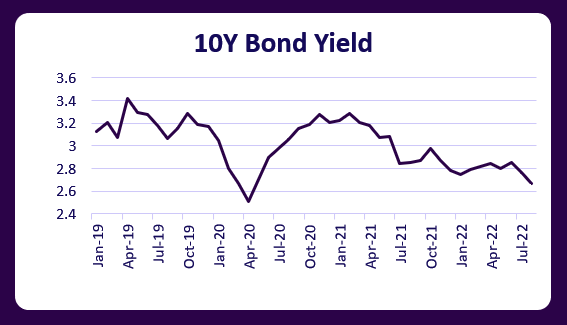
- China’s annual inflation rate rose to 2.7% in July 2022 from 2.5% in June and compared with market forecasts of 2.9%. China has set a target of CPI at around 3% for this year, the same as in 2021.
- China’s 10-year government bond yield fell to 2.6% in late August, the lowest since May of 2020, as the People’s Bank of China is loosening monetary policy aiming to shore up the economy. It is further expected to trade around the 2.6-2.7% level in the coming months.
Interest Rates
- The People’s Bank of China reduced the rate on its one-year policy loans by 10 bps to 2.75% and that for seven-day reverse repos by the same margin to 2%, defying expectations for no change.
- On the other hand, rate hikes in major economies have limited China’s room for monetary easing. There is a policy divergence in China when compared to the rest of the world.
- This is due to lackluster economic momentum and a slowdown in credit growth, which has been less responsive to policy easing than during previous economic downturns.
- Due to rising inflation, we can expect PBOC to not reduce interest rates further in the coming months. However, in case the economy keeps on struggling for the rest of the year, we may expect some sort of monetary easing further.

Forex Reserves and Trade Balance
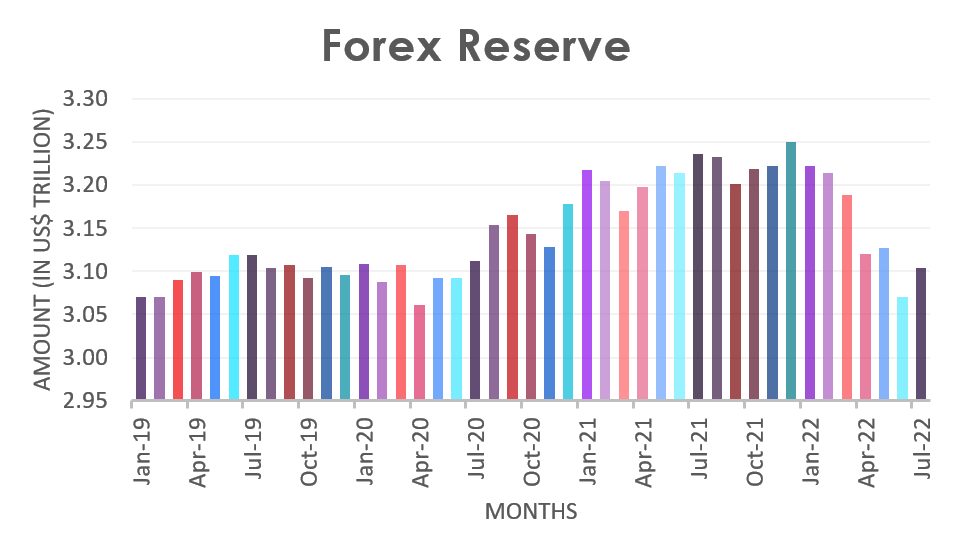
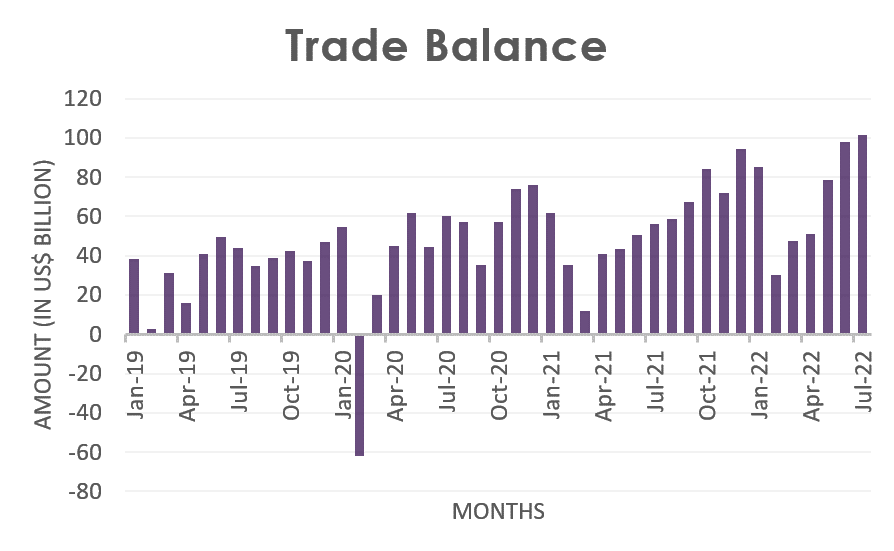
- Foreign exchange reserves in China unexpectedly increased by $32.80 billion from the prior month to $3.104 trillion in July of 2022, compared with market forecasts of $3.05 trillion. This is expected to be around $3.2 trillion by the end of the year.
- China’s trade surplus unexpectedly surged to a fresh record peak of USD 101.26 billion in July 2022 mainly because of a jump in exports. Shipments climbed 18% YoY, the most in six months while imports grew much slower at 2.3%.
Current Account Balance and Exports/Imports


- China’s current account surplus widened to USD 80.2 billion in the second quarter of 2022. Considering the first half of the year, China recorded a current account surplus of USD 169.1 billion. It is expected to be around USD 70 billion this quarter.
- While exports in China increased to a seven-month high of 332.96 USD Billion, imports decreased to 231.70 USD Billion in July. Both exports and imports are expected to fall in the coming months as China undergoes a slowdown.
GDP and Unemployment
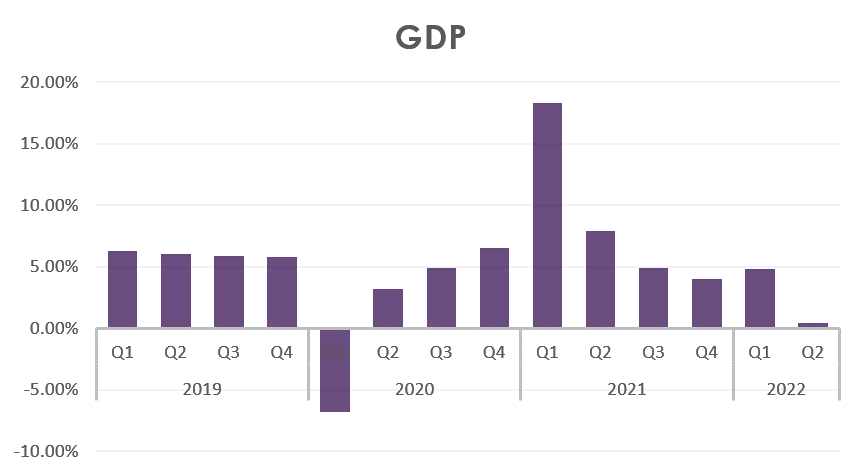
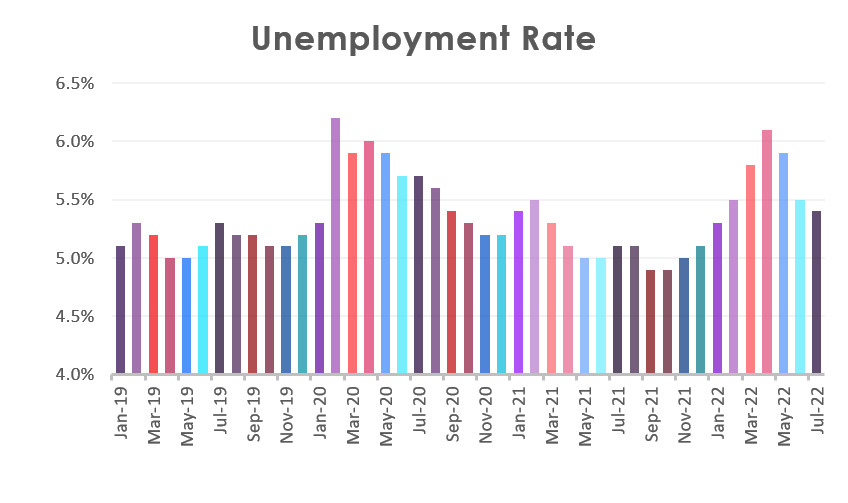
- The Chinese economy advanced 0.4% YoY in Q2 of 2022, missing the market consensus of 1.0% and slowing sharply from a 4.8% growth in Q1. The economy is expected to slightly recover to 3.5% growth this quarter.
- Unemployment was the lowest since January at 5.4%, amid continued efforts by the government to revive the momentum of economic recovery by further loosening of COVID-restrictions. Beijing has set a target of creating over 11 million new urban jobs for 2022.
Foreign Investment
- Foreign Direct Investment in China increased by USD 123.92 billion in July of 2022.
- This is expected to increase to USD 140 billion by the end of this quarter. However, rate hikes in other countries compared to China might affect this variable.

Fears of Distorted FDI data
- According to Chinese data, foreign investment into the country expanded by 17.3% in the first seven months of the year. However, this picture seems more flattering than true.
- Much of the investment into China actually comes from Hong Kong and is likely because mainland companies based there are routing funds through the city in a circular journey that’s called “round-tripping.” Last year around 76% of FDI into China was from Hong Kong.
- Also, services industries have received the vast majority of inflows, rather than the manufacturing and high-tech sectors that are the focus of government efforts to boost investment.
- The era of strong foreign direct investment (FDI) inflows into China seen in the 1990s and the early 2000s is gone as the economy struggles and tensions with other nations rise.
Real Estate Crisis
- The property sector (30% of China’s economy), has lurched from crisis to crisis since the summer of 2020.
- Regulators stepped in to cut excess leverage, causing some developers to default on their debts and struggle to complete projects, resulting in homebuyers threatening to stop making payments.
- Property sales were seen slumping 24.5% in 2022, a far bigger drop than the 10% fall forecast.
- Woes in China’s residential property market are expected to deepen this year as homebuyers remain cautious, with economists now expecting home prices to fall in 2022 and betting on a faster drop in property sales than previously forecast.
- New home prices are expected to fall 1.4% in 2022.

Divestment: The Covid Exodus
- 10,000 high-net-worth residentsare seeking to leave the country this year and take assets worth $48 billion with them — the second-largest predicted wealth and people outflow for a country after Russia.
- Inquiries about moving money out of the country have grown exponentially due to recurring Covid lockdowns owing to China’s zero Covid policy.
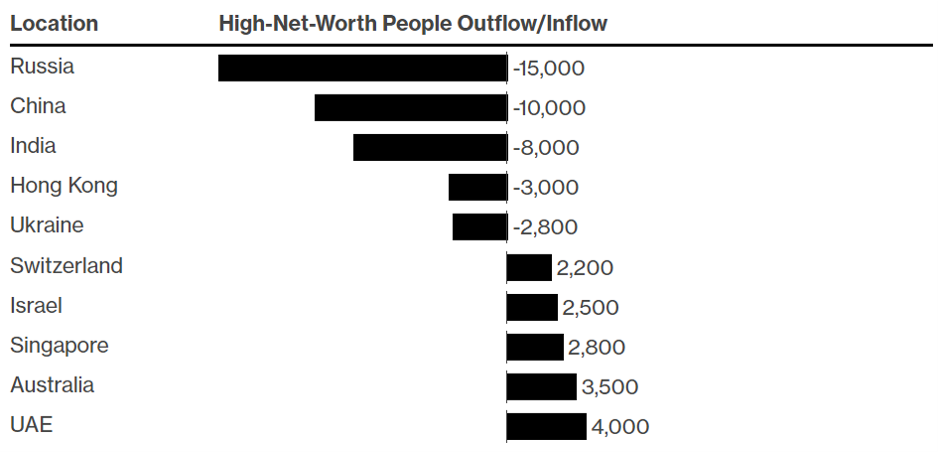
Chinese Yuan Outlook
- China’s economy has been on a rocky path towards recovery as it continues to grapple with recurring Covid-19 outbreaks, property sector risks and slowdown on the economic front.
- The Chinese Yuan is expected to trade at around 7.00-7.10 in the coming months.
- A further negative economic fundamental would lead to more monetary easing through rate cuts or fiscal stimulus.
- This paints a negative picture for CNY in the near future.
